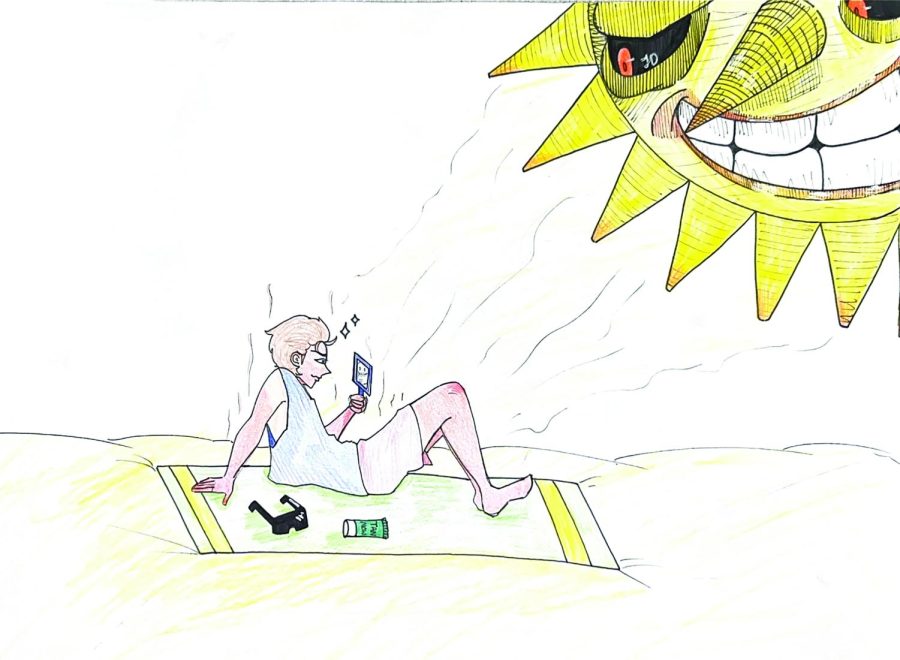Sun protection prevents skin damage, cancer
To avoid increased risks of skin cancer, people should avoid direct sunlight for long periods of time and use sunscreen plus other methods to protect their skin. According to the Skin Cancer Foundation, one in five Americans will develop skin cancer by the time they turn 70.
By practicing sun safety methods and avoiding prolonged exposure to sun rays, people can prevent long-lasting skin damage and lower their risks of developing skin cancer.
As summertime approaches and the weather gets warmer, it becomes more important to protect yourself from the sun. Shorter shirts and pants means more skin is exposed to the ultraviolet (UV) rays.
According to the CDC, UV rays are emitted from the sun, sun lamps and tanning beds. Exposure to UV rays can cause detrimental damage to your skin.
One example of skin damage is skin cancer. According to the CDC, skin cancer is the most common form of cancer. In the U.S. Basal cell and Squamous cell carcinomas are the most common forms, though melanoma can be more dangerous.
Some people think that tanning is not damaging to your skin and will protect them from getting sunburn and more damage.
This is absolutely not true. Both indoor and outdoor tanning can cause repercussions.
Tanning is the skin’s response to exposure to UV rays and an attempt to prevent further damage. Your skin produces more melanin, which is a pigment that darkens the skin and creates a tan.
However, this is still genetically damaging to your skin, and tanning beds are not a safer option.
According to the Skin Cancer Foundation, indoor tanning causes a 75% increased risk of developing skin cancer from just one session before the age of 35.
Just one. One indoor tanning session before you turn 35 can exponentially increase your risk of developing a deadly skin cancer.
The Skin Cancer Foundation also examined a study in which of 63 women who developed melanoma before the age of 30, 61 had used tanning beds.
So, if you really want to get a tan, the safest way to get one is a spray. Even though UV rays are invisible, they can still hurt you.
Even with the dangers of the sun’s rays, you should still get outside as much as you can. According to the CDC, the sun is a perfect way to get vitamin D, and spending time outside can help reduce stress. Just make sure you are always taking measures to protect your skin.
Sunscreen is a surefire way to protect yourself from the sun. The CDC suggests that you use broad spectrum sunscreen with a sun protection factor (SPF) at least 15 anytime you are going outside.
The higher the SPF, the more protection it provides. So, it is best to use a higher SPF when you are going to be in the sun for a long time, or if you are going to be more exposed.
Sunscreen should be reapplied every two hours—more frequently if you are swimming or sweating.
According to the CDC, sunscreen works best when paired with other methods.
Consider wearing swim shirts and other long sleeves whenever possible. Hats with large brims and baseball caps can help to keep the sun off of your face, neck and ears.
Sunglasses help to protect your eyes. The CDC said that this can help reduce the risk of cataracts that can be caused by UV rays.
Whenever you can, stay in the shade.
Before going outside you should check the UV index which can be found on most weather apps. This can help you determine the amount of protection you need.







